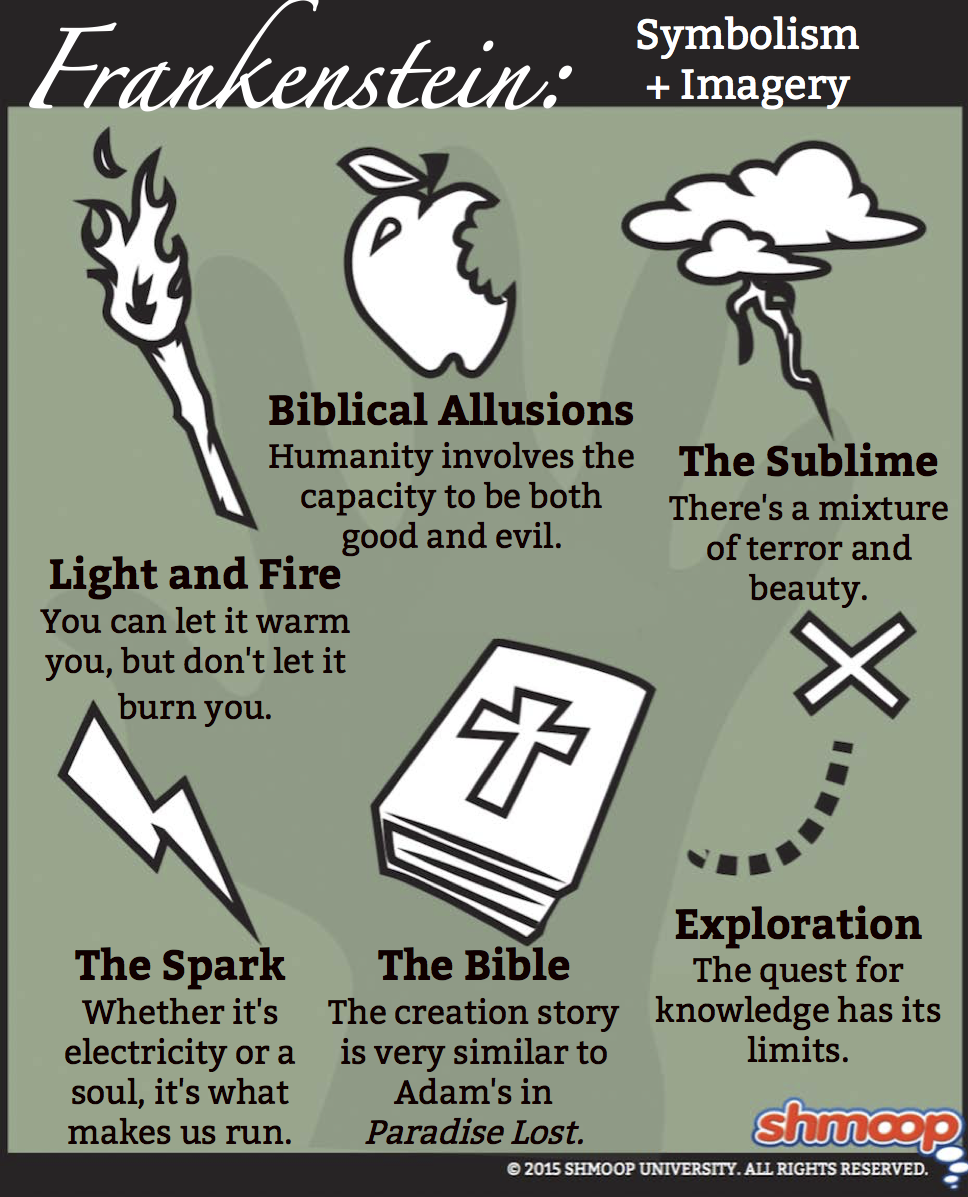Symbolism, Imagery, Allegory

(Click the symbolism infographic to download.)
Picture this: a lab full of bubbling beakers, somewhere in a creepy haunted mansion on a deserted moor. There's a thunderstorm, of course, and a giant body lying on a slab. Lightning flashes and—boom! The body lying on the slab rises abruptly and looks in anger at its creator.
Yeah, not so much. This is how Frankenstein describes it:
It was on a dreary night of November that I beheld the accomplishment of my toils. With an anxiety that almost amounted to agony, I collected the instruments of life around me, that I might infuse a spark of being into the lifeless thing that lay at my feet. It was already one in the morning; the rain pattered dismally against the panes, and my candle was nearly burnt out, when, by the glimmer of the half-extinguished light, I saw the dull yellow eye of the creature open; it breathed hard, and a convulsive motion agitated its limbs. (5.1)
Not nearly so dramatic, right? Most of the paraphernalia that we associate with Frankenstein and his monster is a creation of the 1931 movie—but that doesn't mean this scene isn't important. Today, we mostly read that phrase "spark of being" as electricity, because, as it turns out, electricity really is what makes the human heart run. In 1771, a guy named Luigi Galvani discovered that electricity could make a frog's legs twitch.
Creepy? Yep. Also, great fuel for a long-standing debate: are we just bodies, or are we something more? Is the spark of being that makes us run really just electricity, or is it something non-material and non-scientific, like a soul? Can a "spark" really give life back to the dead—or does true life require something beyond the material?